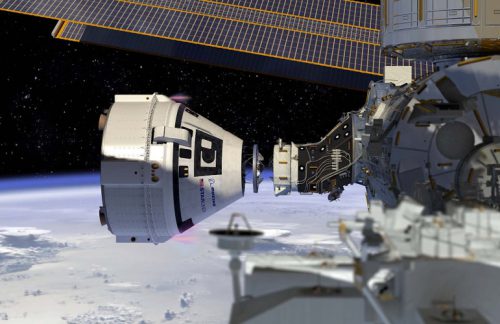The NASA administrator added that: "Obviously we had some challenges today when the spacecraft was separated from the launch vehicle and did not enter the correct orbit due to a malfunction in the timing system that resulted in the spacecraft believing it was on a different timing than it really was. According to him, if there were astronauts in the spaceship, they would be able to take control of it and perform the correct maneuvers

A malfunction in an experimental launch of the Boeing Starliner spacecraft that is supposed to carry astronauts to the space station in the future. The spacecraft started its engines today after an unmanned launch, in preparation for reaching the orbit of the space station, but it did so at the wrong time and when the ground control personnel discovered this and ordered it to stop firing the launchers, it was already too late, and there was not enough fuel left to reach the space station. Instead, after gaining control of the spacecraft in low Earth orbit, Boeing will attempt to land it at the company's test facilities in White Sands, New Mexico within about 48 hours.
As mentioned, after the successful separation of the spacecraft from the Atlas launcher that contained Centaur engines of the United Launch Services Company (SLA), the flight controllers noticed that a malfunction had occurred and tried to send commands to take control of the spacecraft. However, Jim Chilton, senior vice president for space and launch at the Boeing Company, said that the problem was exacerbated by a communication gap between one relay satellite and another. The controllers were later able to put the spacecraft into a stable orbit at an altitude of 186 to 216 kilometers. Steve Stich, deputy director of the commercial launch program at NASA, said two more maneuvers will be performed later today to improve the orbit.
NASA Director Jim Bridenstine said at a press conference shortly after the failure that he spoke with Vice President Mike Pence who heads the Space Council and I explained to him what happened but also what was successful in today's launch and he is convinced of our ability to return and send humans into space on American launchers from US soil.
The NASA administrator added that: "Obviously we had some challenges today when the spacecraft was separated from the launch vehicle and did not enter the correct orbit due to a malfunction in the timing system that resulted in the spacecraft believing it was on a different timing than it really was. In the end it looks like we won't be able to rendezvous with the International Space Station. It seems that due to the gap in the activity of the communication satellites, the spacecraft did not receive the command to enter the correct orbit."
According to Brindstein, if there were astronauts in the spaceship they could have taken control of it and corrected the trajectory, without astronauts it simply automatically carried out its commands, but deviated from its trajectory due to the wrong start time.
He emphasizes that many steps were carried out successfully, for example the operation of the Centaur launcher which for the first time since 2004 incorporated two RL10 engines,
ULA CEO Tory Bruno said this was the 81st flight of the Atlas 5 launcher but it was a launcher uniquely designed for a manned mission. All stages of opening the aerodynamic canopy, controlling the aerodynamic loads and separating the capsule worked well.
Also, we had a forward-facing camera on the front of the Centaur that was able to observe the separation of the spacecraft. And it was successful.
Chilton added that from the moment of separation, the spacecraft is scheduled to burn its engines to reach the orbit where it will meet the International Space Station. It didn't happen, it seems the spacecraft used incorrect timing systems. We need to understand the underlying reason why the correct software was not embedded in the spacecraft computer. All these steps were carried out autonomously, but as mentioned not at the correct timing, which led the spacecraft to a wrong trajectory.
"The engineers quickly diagnosed the fault and sent an order to stop the burning, but were unable to do so in time due to the gap between the communication satellites. Members of the flight control team put the spacecraft into a safe orbit, and its solar panels were pointed at the sun to charge the electrical system. All spacecraft systems work well, including electricity and cooling. We performed a remote test of the sensors and the optical system and they work as planned. All of this is being conducted on a course that should allow us to return the spaceship to land at White Sands within 48 hours. This landing is also an important part of the test flight, which was supposed to take place after the meeting with the space station and parting from it." Chilton said.
NASA and Boeing teams are now working to calculate a landing trajectory that will match the amount of fuel left in the spacecraft, about 75% of the fuel it had at the time of launch.
Coverage of the launch on NASA's YouTube channel
